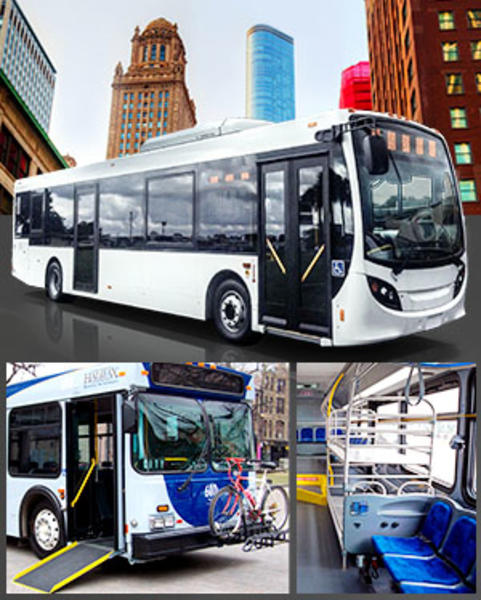News
Debunked: 3 Myths About City Transit Buses for Sale


Benefits of purchasing a city transit bus are clear to citizens and leaders of municipalities that have welcomed them. The Prince George Citizen reported that upon the arrival of a pristine medium-duty New Flyer MiDi transit bus to Prince George, British Columbia where he serves as Mayor, Lyn Hall expressed his excitement that, “The New Flyer MiDi will serve to make Prince George’s already robust and effective transit service even more flexible, accessible, and accommodating for citizens and visitors alike…”
Despite the clear reasons to go forward with the purchase of a city transit bus, some would be buyers, in an effort to make the most responsible use of public funds, allow these myths about city transit buses for sale to delay or put off entirely the purchase of a city bus. Misinformation should never prevent a move that has the potential to have such a strong positive impact on a community and its citizens. Here, three common myths surrounding city transit buses for sale are debunked!
Myth 1: Longer Load Time for Wheelchair Passengers
Wheelchair lifts are no longer the only option for passengers using wheelchairs to board a city transit bus. Load time for passenger loads that include those using wheelchairs can be reduced to as few as 5 minutes with, “…new accessible, low floor, kneeling buses (which) are equipped with ramps that allow passengers to board and exit the bus with ease, ” like those recently added to the fleet of public buses in Mississauga, Ontario, as reported by Market Wired.
Standard wheelchair lifts are great when time allows. A sturdy build ensures each passenger makes it safe onto the bus. However, in a busy city environment drivers do not always have the time to delay their schedule by 20 or 30 minutes. Using a low floor bus with a ramp able to be dropped from the driver seat, loading can be quick and easy.
Myth 2: Perimeter Seating Only
While perimeter seating with standing room in the center aisle is the option most customers choose, the seating layout of a city transit bus can actually be customized. The only factor that need be a consideration in the design of the seating layout is what will best suit the needs of the people who will be riding the bus.
Myth 3: Cookie-Cutter Design
No one city bus need look the same as others. Even more significant is that not every bus in a city transit bus system need to function like the others. Nearly every design choice of a city transit bus is customizable including wraps, seat fabric and flooring. For a city that has an existing bus system, the addition of a new customized bus can mean meeting the needs of a modern municipality in ways that buses in an older fleet cannot. On the purchase of a brand new bus to join the bus system of Grand Rapids, Michigan, project manager Conrad Venema effused to The Detroit News, “It was something that was uniquely branded and fulfilled a different role, a different experience.”
With the most common three myths surrounding city transit buses for sale debunked, any city with the inclination and budget to do so should feel encouraged to move forward with the purchase. After all, as research reported by City Lab found, “…well-planned transit can be more than a ride — it can be a positive emotional force.”

